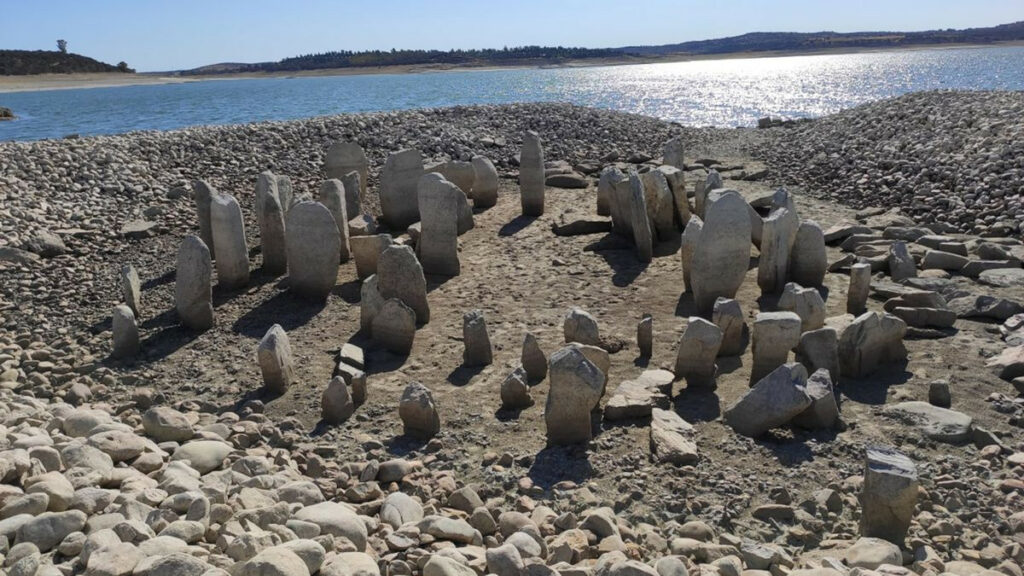The Dolmen of Guadalperal, affectionately known as the “Spanish Stonehenge,” is located in Spain’s Extremadura region and dates back over 7,000 years, predating the Egyptian pyramids. Comprising around 150 large granite stones, some towering over two meters, this ancient monument creates a stunning sight.

Unlike England’s Stonehenge, which stands openly, the Dolmen often remains submerged due to the construction of the Valdecañas reservoir in the 1960s. However, in July 2019, a severe drought revealed all 150 stones for the first time in half a century, providing researchers a rare opportunity to study the site.

Experts suggest that this monument may have been aligned with the summer solstice, potentially serving as a solar temple, indicating an advanced understanding of celestial movements by its builders. Some stones also feature intriguing carvings that may represent a serpent or a rudimentary map of the nearby Tagus River.

While the exact purpose remains debated, many archaeologists believe the Dolmen likely functioned as a burial site or ceremonial structure for ancient inhabitants. This monument not only showcases the creativity but also the cosmic awareness of early civilizations, inviting curiosity about humanity’s distant past.

Video

